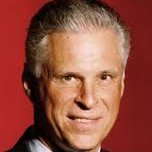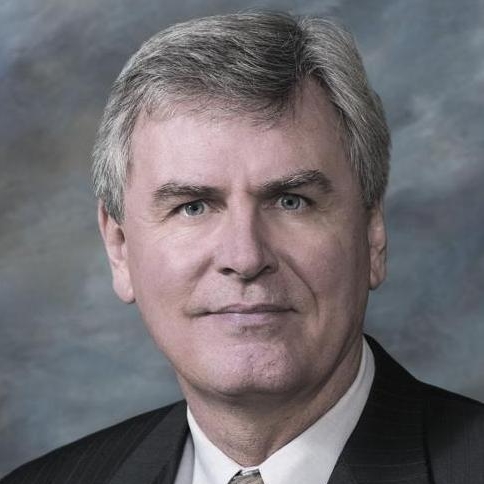January Dinner Meeting | 1.21.2015
"US DOE Laboratories and the Remediation of Fukushima Dai-Ichi" by Dr. Michaele "Mikey" Brady Raap
ABSTRACT: The Savannah River National Laboratory (SRNL) and Pacific Northwest National Laboratory (PNNL) have a contract agreement with Tokyo Electric Power Company (TEPCO) to provide technical assistance for the remediation of TEPCO's Fukushima Daiichi Nuclear Power Station. The DOE complex, and specifically these two laboratories, have significant experience in nuclear facility decontamination and decommissioning from nuclear material production remediation and cleanup efforts. The presentation discusses contributions by the laboratories in Waste Management, Analytical Labs, Damaged Fuel & Debris Disposition, Grouting and Sealing Technologies, Groundwater Control and Treatment and Community Revitalization.
SPEAKER BACKGROUND: Dr. Brady Raap, President of the ANS for the 2014-2015 term, has been an active ANS member since 1985. She has held many leadership positions, including the chairmanship of both the Reactor Physics and Nuclear Criticality Safety Divisions. Dr. Brady Raap is a chief engineer with the Nuclear Systems Design, Engineering & Analysis Group at the Pacific Northwest National Laboratory (PNNL) in Richland, Washington. She has more than 25 years of experience in nuclear and criticality safety for plutonium processing and spent fuel systems, including the design and review of benchmark experiments, safety assessments at operating facilities and integrating safety-in-design.
December Dinner Meeting | 12.17.2014
"Decommissioning San Onofre: A Community Engagement Perspective" by Dr. David G. Victor
ABSTRACT: The process of decommissioning at San Onofre Units 2 and 3 is now under way. This talk will focus on processes of community engagement that have helped keep the owners of the plant better informed about what the communities around the plant expect and want while also keeping the communities informed about the decommissioning process. The talk will include some attention to the question of long-term nuclear waste storage on site - a topic that has commanded substantial community attention and concern, made worse the persistent failure of the country to open a reliable permanent spent fuel repository. These are the largest commercial units to be decommissioned in the US and the process could help establish some models for how community engagement is unfolds at other units in the future.
November Dinner Meeting | 11.19.2014
"SMRs - benefits, myths and prognosis" by Dr. Paul Lorenzini
 ABSTRACT: Dr. Lorenzini will focus his remarks on the NuScale Small Modular Reactor (SMR) and will provide an update on the safety
benefits of the design. He will comment on recent critiques by the Union of Concerned Scientists and the Institute for Energy and
Environmental Research which have questioned those benefits and will conclude with comments about the future of SMRs as we see it today.
ABSTRACT: Dr. Lorenzini will focus his remarks on the NuScale Small Modular Reactor (SMR) and will provide an update on the safety
benefits of the design. He will comment on recent critiques by the Union of Concerned Scientists and the Institute for Energy and
Environmental Research which have questioned those benefits and will conclude with comments about the future of SMRs as we see it today.
October Dinner Meeting | 10.15.2014
"Iran's Nuclear Program and International Nuclear Negotiations" by Dr. Mehdi Sarram
ABSTRACT: Iran's nuclear program will be discussed in two parts, 1955 to 1979 under the Shah and from 1979 to the present under the new regime. After the regime change in Iran in 1979, there was a major shift in Iran's policy on nuclear, including the restart of the nuclear program. Iran's uranium enrichment program with assistance from A.Q. Khan of Pakistan and the heavy water reactor project will be discussed. Since 2006, six UN Security Council resolutions on sanctions on Iran have been passed as well as numerous sanctions by the EU and the US. Iran has essentially been kept in isolation because the world powers, in particular the US, believed that Iran was developing nuclear weapons. The P5+1 group of six world powers in 2006 joined diplomatic efforts with Iran with regard to its nuclear program. The term refers to the five permanent members of the UN Security Council, namely United States, Russia, China, United Kingdom, and France, plus Germany. In November 2013, Iran and the P5+1 agreed on a 6 months temporary deal regarding Iran's nuclear program. This is significant because it comes after 35 years of animosity between the US and Iran. Significant progress was achieved by the July 20 dead line, and the agreement was extended by four months. The implementation of commitments by the P5+1 and Iran during this period will be discussed. This presentation will include: Was Iran developing nuclear weapons as claimed by the West?; Are Iran's enrichment facilities in compliance with the IAEA-NPT requirements?; Misinformation and lies on all sides; role of the IAEA; role of the US think tanks and media; the numerous sanctions by the UN Security Council, the US and EU on Iran since 2006; what are the pending issues between Iran and the P5+1 and can they be resolved by November 20, 2014?; what can be expected in the next five years? Finally, have we learned anything from the confrontations with Iran in the past 35 years?
SPEAKER BACKGROUND: Dr. Sarram was the supervisor of the 5 MW research reactor and an assistant professor at University of Tehran, 1967-1974. He served as Director of Nuclear Safeguards, Atomic Energy Organization of Iran from 1974-1979. In 1981 when went to Vienna, Austria to work for IAEA as a nuclear safeguards inspector and staff member. In 1982, he came to the US and has been working for the nuclear industry since then.
September Dinner Meeting | 9.4.2014
"International Perspectives on Nuclear Power" by Dr. John Kelly
ABSTRACT: After President Eisenhower announced the Atoms for Peace initiative in December 1953, commercial nuclear power grew rapidly around the world. Today, nuclear power is the largest source of carbon free electricity and accounts for nearly 14% of all electricity production in the entire world and over 20% of electricity production in Organization for Economic Cooperation and Development (OECD) countries. There are many reasons for the success of this first wave of nuclear power deployment as well as for the setbacks that stalled further deployment. The world is now poised for a second wave of nuclear power deployment. Interestingly, today's drivers are quite different from those of 60 years ago with concerns over carbon emissions being a key driver. Further, countries with established nuclear power programs are unlikely to lead the deployment of new nuclear power. In addition, countries such as China, which did not fully participate in the first wave, now have plans to catch up and potentially lead this resurgence of commercial nuclear power. Dr. Kelly's presentation will discuss the status of new nuclear construction both in the United States and internationally and provide some insights into the future of advanced nuclear power systems, such as Small Modular Reactors (SMRs) and Generation IV Reactors. He will discuss efforts to accelerate the commercialization of SMRs in the United States and convey the progress in the Generation IV International Forum to develop advanced reactor technologies globally.
SPEAKER BACKGROUND: Dr. John E. Kelly is the Deputy Assistant Secretary for Nuclear Reactor Technologies in the Office of Nuclear Energy. His office is responsible for civilian nuclear reactor research and development portfolio, which includes DOE's programs on Small Modular Reactors, LWR sustainability, and Generation IV reactors. His office is also responsible for the design, development, and production of radioisotope power systems, principally for NASA missions. In the international arena, Dr. Kelly chairs the Generation IV International Forum and the Standing Advisory Group on Nuclear Energy (SAGNE). Prior to joining the Department of Energy, Dr. Kelly spent 30 years at Sandia National Laboratories where he was engaged in a broad spectrum of research programs in nuclear reactor safety, advanced nuclear energy technology, and national security. Dr. Kelly received his B.S. in nuclear engineering from the University of Michigan in 1976 and his Ph.D. in nuclear engineering from the Massachusetts Institute of Technology in 1980.
Link to PresentationJuly Dinner Meeting | 7.26.2014
"Design and Development of EM2, a Convert-and-Burn Fast Reactor" by Dr. Robert Schleicher
ABSTRACT: The principal design objectives for EM2 are to achieve an economically competitive power source that improves resource utilization, reduces waste and meets a self-imposed high standard of safety. In order to meet this challenge, EM2 departs from traditional nuclear technologies and embraces technical advances in materials, physics design, power conversion, control and passive safety methods. EM2 is a modular helium-cooled fast reactor with a 265MWe net output. It uses a combined Brayton-Rankine cycle to achieve a net conversion efficiency of 53%. The core is designed for a 30 year fuel life without refueling or reshuffling. The convert-and-burn neutronics design reduces the rate of once-through high-level waste production by 80% relative to an LWR. It also enables the core to be multi-fuel capable including LEU, natural and depleted U, Th and spent LWR fuel. The base fuel is in the form of UC pellets with SiC composite cladding. These materials allow a high power density and a core outlet temperature of 850 deg C for high efficiency. General Atomics (GA) has a bench-scale fuel fabrication facility for making both EM2 fuel pellets and cladding. GA cladding materials have been irradiated in ORNL's HFIR to demonstrate the desired irradiation saturation behavior. The design is highly modularized not only reduce cost but also the risks associated with construction cost and schedule.
Link to PresentationMay Dinner Meeting | 5.21.2014
"Economical Production of Pu-238: Feasibility Study"
by Dr. Steven Howe
 ABSTRACT: All space exploration missions traveling beyond Jupiter must use radioisotopic power sources for electrical power. The best isotope to
power these sources is plutonium-238. The US supply of Pu-238 is almost exhausted. The Center for Space Nuclear Research has conceived of
a potentially affordable process to produce Pu-238. The new process will also produce dramatically less waste. Come learn about the vital
role nuclear energy plays in space exploration and how the needed Pu-238 has been provided in the past and can be produced in the future.
ABSTRACT: All space exploration missions traveling beyond Jupiter must use radioisotopic power sources for electrical power. The best isotope to
power these sources is plutonium-238. The US supply of Pu-238 is almost exhausted. The Center for Space Nuclear Research has conceived of
a potentially affordable process to produce Pu-238. The new process will also produce dramatically less waste. Come learn about the vital
role nuclear energy plays in space exploration and how the needed Pu-238 has been provided in the past and can be produced in the future.